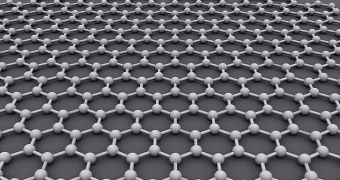Once again, graphene shows that it is the holy grail of nanotechnology, and technology in general. No other material has proven itself so versatile and capable of improving essentially everything reliant on energy conductivity.
Materials engineers at Monash University in Australia have shared with the world a very intriguing piece of research.
Graphene supercapacitors that are 10 times as energy-dense as those used in today's commercial devices have been created.
That puts them on the same level as car batteries, those big, crate-like things filled with lead and acid.
For those that need to wrap their minds around the revelation, supercapacitors are small batteries that recharge and discharge almost instantly.
That means that they can power devices as batteries can, but can regain their energy charge immediately upon depletion. Those are the benefits of high power density, in spite of the very low energy density.
Normal capacitors can't really do much, although we did see mice and other small items use them.
Supercapacitors are entirely another thing though. These ones made by graphene have shown themselves to possess a power density 10-20 times higher than that of conventional lithium-ion or lead-acid batteries.
Sadly, the energy density is 10-20 times worse, which means that supercapacitors won't be good for much besides short bursts of energy, like car acceleration. So we won't be seeing them replace the batteries on phones and other gadgets.
Or at least, that's what we would say if graphene didn't hold the key to changing all that.
The amount of energy stored by an electrochemical capacitor is dependent on the amount of charge-carrying electrolyte that contacts the electrodes. Thus, it grows along with the surface area of the electrodes.
Graphene is the thinnest known substance and, thus, it is capable of providing an astoundingly large surface area.
Now, if only scientists could figure out how to mass-produce it, we'd actually see graphene supercapacitor-powered phones and whatever else.

 14 DAY TRIAL //
14 DAY TRIAL //